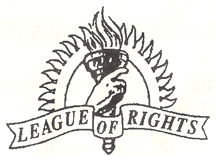Ireland Feels the Pangs of the Birth Dearth, By Mrs. Vera West
In the heart of Dublin, the once-familiar sounds of children's laughter in bustling neighborhoods are becoming increasingly rare. Ireland, a nation historically known for its vibrant youth and growing families, is now confronting a profound demographic shift: a significant decline in birth rates. This trend not only reshapes the social fabric of the country but also poses substantial economic challenges that could influence Ireland's future for generations.
Recent data from the Central Statistics Office (CSO) reveals a stark decrease in registered births, from 68,930 in 2013 to 54,678 in 2023—a 20 percent decline over a decade.
This downward trajectory is further underscored by a drop in the total fertility rate (TFR), which fell from 1.78 live births per woman in 2021 to 1.54 in 2022, positioning Ireland just above the European Union average of 1.46.
Several factors contribute to this demographic transformation. The average age of first-time mothers in Ireland has risen to 31.5 years, reflecting societal shifts such as increased female participation in higher education and the workforce, as well as economic considerations like housing affordability.
These changes often lead to delayed family planning and, consequently, smaller family sizes.
The ramifications of a declining birth rate extend beyond family structures, casting a long shadow over Ireland's economic landscape. A reduced number of births leads to a smaller future workforce, which in turn affects economic productivity and growth. Moreover, with fewer working-age individuals to support an aging population, the strain on public finances intensifies, particularly concerning pensions and healthcare services. Projections indicate that Ireland's old-age dependency ratio is set to increase by 22 percentage points between now and 2050, meaning the number of working-age people relative to retirees will decrease significantly.
Beyond economics, the decline in birth rates influences Ireland's cultural and social identity. Rural communities, in particular, feel the impact as schools face closures due to dwindling student numbers, and local traditions wane with the decreasing youth population. The Gaelic Athletic Association (GAA), a cornerstone of Irish culture, has expressed concerns that the club game could cease to exist in large swathes of the country if current trends persist.
Addressing this multifaceted issue requires comprehensive strategies. Policy interventions aimed at supporting families, such as affordable childcare, housing initiatives, and flexible work arrangements, could encourage higher birth rates, at least on paper. Additionally, fostering an environment that balances career aspirations with family life is crucial. As Archbishop Eamon Martin emphasized, there is a need for a renewed focus on family values and support systems to navigate these demographic challenges.
Ireland's declining birth rate presents a complex challenge intertwining economic, social, and cultural threads. Ireland like the rest of the West and the technologically advanced nations of East Asia is facing the growing urgency of the birth dearth, under the shadow of social collapse.


Comments